Zložljive kartonske škatle so bile stalnica v embalažni industriji zaradi svoje vsestranskosti, enostavne uporabe in stroškovne učinkovitosti. Kot bistveno orodje za pakiranje različnih izdelkov – od pakirane hrane do elektronike – razumevanje osnov zložljiva kartonska škatla embalaža je ključnega pomena. Tukaj je tisto, kar morate vedeti.
1: Razumevanje zložljive kartonske embalaže
Zložljive kartonske škatle, ki so običajno izdelane iz kartona, se pošiljajo ploščate in po potrebi sestavijo v škatlo. Lahko jih prilagodite po velikosti, obliki in tisku, zaradi česar so prilagodljiva in priljubljena izbira za številne izdelke.
2: Slogi in vrste zložljivih kartonov
Zložljive kartonske škatle so na voljo v številnih slogih, odvisno od njihovega zapiranja in načina sestavljanja. Priljubljeni slogi vključujejo zavihane končne škatle, spodnje škatle s samodejnim zaklepanjem, tesnilne končne škatle in dvokapne škatle. Vsak ponuja različne stopnje varnosti in estetske privlačnosti.
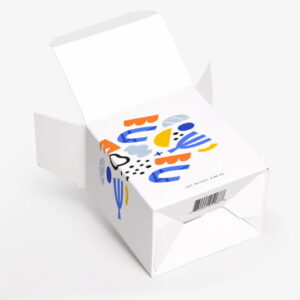
The spodnja škatla s samodejnim zaklepanjem, ali crash bottom box, ima zasnovo dna, ki se samodejno zaklene na mestu med sestavljanjem s preprosto zavihkom. Ta slog škatle je priporočljiv za težje izdelke, kot sta vino in pivo, saj je najmočnejši med vsemi spodaj navedenimi možnostmi pakiranja papirnatih škatel.
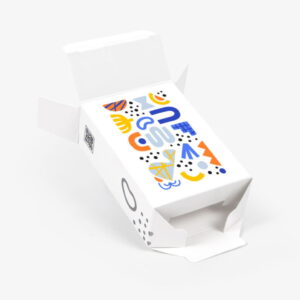
Druga možnost je, zaskočite dno ali zaklenite spodnjo škatlo je še ena močna možnost, primerna za težje predmete, kot sta vino ali elektronika. Ta oblika škatle, znana tudi kot spodnja škatla 1-2-3, ima zavihke, ki se potisnejo ena v drugo in se zaskočijo.
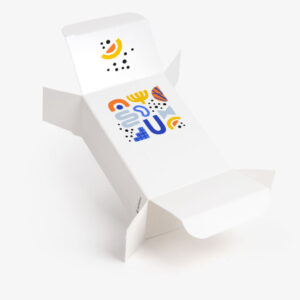
Ravne zavihane končne škatle so shranjeni ravno in ne zahtevajo dodatne montaže. Prepoznate jih po tem, da imajo zgornji in spodnji del zapirala na isti strani škatle ter reže na koncih, da ostanejo zaponke zaklenjene. Ta slog je idealen za lahke ali srednje težke izdelke, kot so kozmetika ali eterična olja.
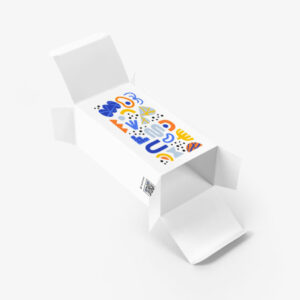
Obrnite končne škatle so enaki ravnim zavihkom, vendar imajo končne zapore na nasprotnih straneh škatle. Ker so skoraj enake, so obrnjene škatle idealne tudi za lahke ali srednje težke izdelke.
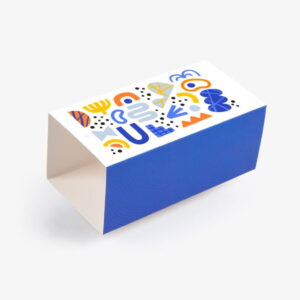
Papirnata ovojna embalaža je kartonski slog, ki je zasnovan tako, da zdrsne čez drugo, običajno neokrašeno škatlo. Ta možnost je zelo priljubljena izbira, ker je najcenejša možnost in lahko takoj ustvari fantastično prilagoditev navadne škatle.
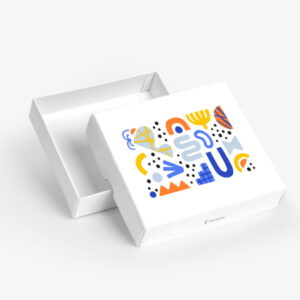
Škatle z dvojnimi stenami in pokrovi ali dvodelne škatle sta ločena z zgornjo in spodnjo polovico. Pladenj in pokrov se tesno prilegata skupaj, da ustvarita trdno dvojno steno, idealno za luksuzne izdelke, kot so nakit in oblačila, ali služita kot embalaža za hrano za izdelke, kot so slaščice.
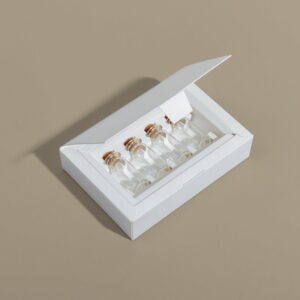
Prilagojene zložljive kartonske škatle so zadnja priljubljena možnost. Kdo je rekel, da morajo biti zložljive škatle na določen način? Izrezi in vstavki po meri za zgornje možnosti so omejeni le na domišljijo. Dobro nameščen izrez ali vložek lahko vaši embalaži doda edinstven odtenek in se tako razlikuje od konkurentov!
3: Proizvodni procesi
Proizvodnja zložljivih kartonskih škatel vključuje več stopenj – oblikovanje, tiskanje, izrezovanje, zgibanje in lepljenje. Nenehno se razvijajo nove tehnologije in tehnike, ki povečujejo natančnost in učinkovitost teh stopenj.
4: Možnosti prilagajanja in končne obdelave
Zložljivo kartonsko embalažo je mogoče preprosto prilagoditi z različnimi tiski, reliefom, UV točkovnim tiskom ali posebnimi rezi. Za dodatno zaščito in estetsko privlačnost se lahko nanesejo laminati, laki ali premazi.
5: Prednosti zložljive kartonske embalaže
Zložljive kartonske škatle ponujajo cenovno dostopnost, lahkost ter preprosto shranjevanje in transport. Prav tako so zelo prilagodljivi, zaradi česar so vsestranski za široko paleto izdelkov. Poleg tega so zaradi svoje narave, ki jo je mogoče reciklirati, okolju prijazna možnost pakiranja.
Pogosta vprašanja:
1. Ali so zložljive kartonske škatle dovolj trpežne za težke izdelke?
Da, z ustrezno izbiro materiala in dizajnom lahko zložljive kartonske škatle prenesejo širok razpon teže. Vendar pa za zelo težke ali lomljive predmete razmislite o dopolnitvi z dodatno zaščitno embalažo.
2. Ali lahko za prehrambene izdelke uporabljam zložljive kartonske škatle?
Da, veliko živilskih izdelkov je varno pakiranih v zložljive kartonske škatle. Posebni materiali za živila zagotavljajo varno shranjevanje živil.
3. Ali obstaja najmanjša količina naročila za zložljive škatle po meri?
To se lahko zelo razlikuje glede na ponudnika embalaže. Nekateri ponujajo zelo nizke minimalne količine naročil, drugi pa morda zahtevajo večja naročila zaradi stroškovne učinkovitosti.
4. Ali lahko naredimo zložljivo kartonsko embalažo bolj okolju prijazno?
Da, izbira recikliranega ali trajnostno pridobljenega kartona in zmanjšanje uporabe zaključkov, ki jih ni mogoče reciklirati, lahko naredijo vašo zložljivo kartonsko embalažo bolj zeleno.
5. Kako se sestavijo zložljive kartonske škatle?
Večina zložljivih kartonskih škatel je zasnovanih za enostavno sestavljanje, pogosto zahteva le preprosto odvijanje in pritrditev predhodno zlepljenih delov.
V svetu embalaže se zložljive kartonske škatle še naprej držijo s svojo zanesljivostjo, vsestranskostjo in stroškovno učinkovitostjo. Z razumevanjem njihovih slogov, proizvodnih procesov in možnosti prilagajanja lahko sprostite polni potencial teh embalažnih konjev. Ne glede na to, ali ste velika korporacija ali majhno podjetje, so zložljive kartonske škatle zanesljiv zaveznik za vaše potrebe po pakiranju.
